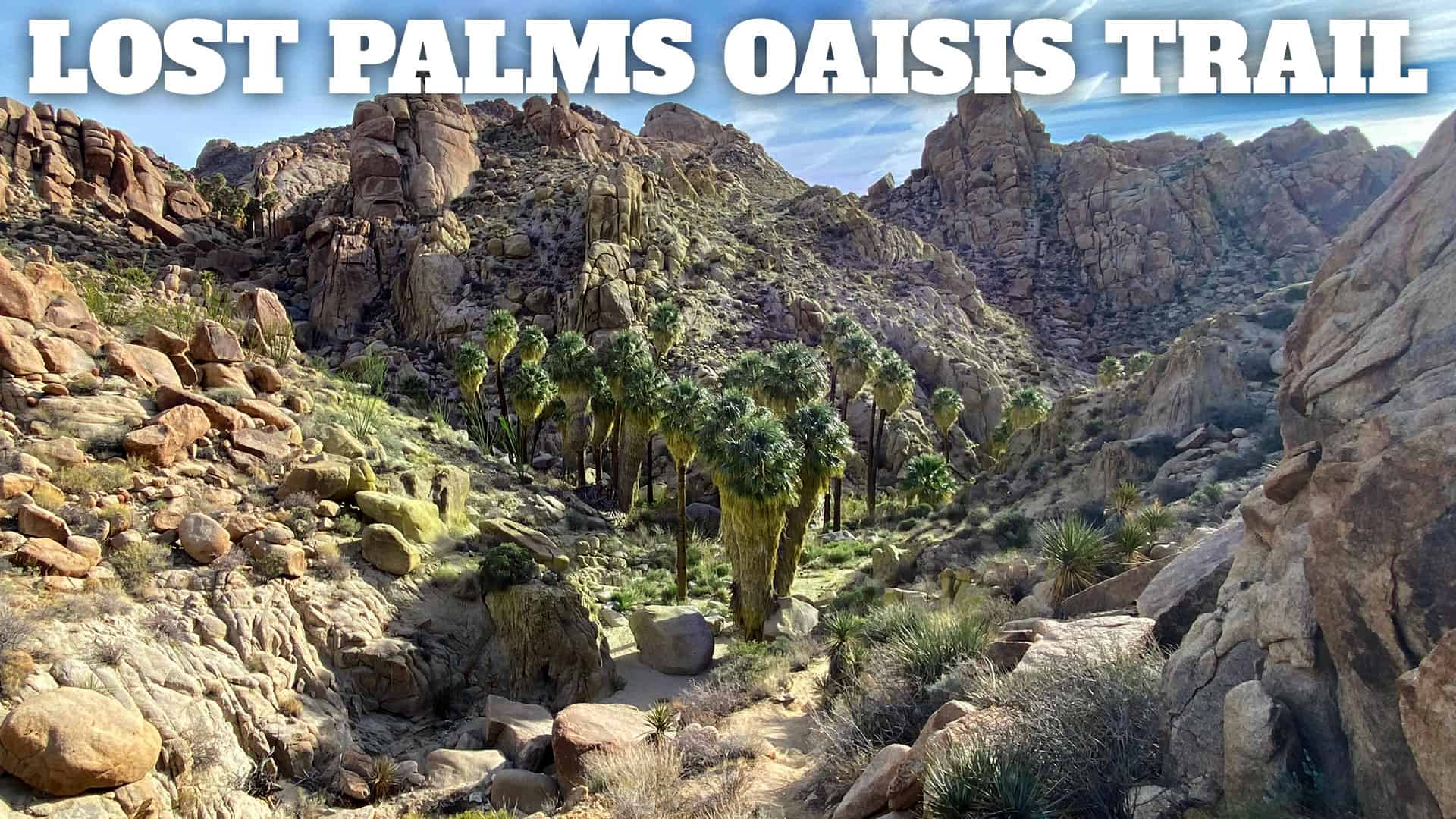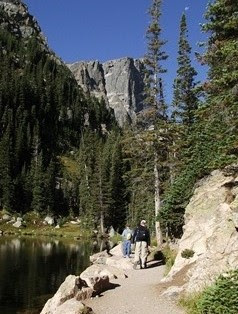“Early to bed and early to rise. Out jogging about 5:30am. Jog a mile and walk it back briskly. It takes me 12 minutes to jog the mile and 15 minutes to walk it. Do some upper trunk exercises, work in the yard, and walk to the market, and work.”
-Hulda “Grandma Whitney” Crooks (1896-1997; climbed Mt. Whitney 23 times, including at age 91)
While not everyone has to be Hulda Crooks to enjoy time in the outdoors, hiking can be a wonderful activity for senior citizens to help stay healthy of body and mind. The Center for Disease Control recommends at least 2.5 hours per week of moderate to intensive aerobic activity for seniors. According to this article from Medicareful, hiking and walking not only help with cardiovascular function, but also have been shown to boost brain power and memory. The author also explains, “The importance of low-impact exercise for seniors cannot be overstated. With the increased chance of injury that many seniors face, due to our bones losing density as we age and other fitness challenges, older Americans need to find ways to mitigate the risk while keeping in shape. Luckily, hiking, a low-impact exercise, may be able to fulfill this need perfectly.”
Of course, while all hikers need to prepare appropriately for the hike and use caution and good judgment on the trails, with older hikers, consequences for not doing so become more severe. The L.A. hiking community recently mourned the loss of Sam Kim, whose death at age 78 on Mt. Baldy (a mountain he had climbed over 1,000 times) is a sobering example of how even experienced hikers aren’t immune from tragic accidents. Whether you are a senior who is looking to (re)discover the outdoors or a younger hiker who wants to encourage an older friend or relative to explore nature here are a few tips to help make your trip as safe and enjoyable as possible.
General guidelines
If you are planning an ambitious hiking trip, consult your doctor. Even if you don’t have any known conditions and even if you feel good in general, your body may have deteriorated in ways that are gradual and as such not obvious. According to this article from Harvard Medical School, a man’s heart’s capacity to pump blood decreases by 5-10% per decade: “[A] healthy 25-year-old heart can pump 2½ quarts of blood a minute, but a 65-year-old heart can’t get above 1½ quarts, and an 80-year-old heart can pump only about a quart, even if it’s disease-free.” As with all hikers, routine precautions – letting people know where you are going and what time you are expected to return and carrying the ten essentials – are important.
Stretch before you start
It’s really important to do some simple stretching exercises to warm up before you get going, regardless of how challenging the hike is. Even if a trail seems easy, in reality, hikers of any age and fitness level need to stretch their muscles and prepare them for the hike before starting any hike, even if it’s not a big ascent. For senior-specific stretches, click here.
Nutrition and hydration
These are important for hikers of any age to consider, but senior hikers have special requirements. If you are a senior hiker returning to the trails after some time off, your nutritional needs have changed; if you are a younger hiker looking to hike with an older friend or relative, their needs will be different from yours.
While younger backpackers may rely on the 100 calorie per ounce of food rule of thumb to stay fueled, older hikers, especially those out for moderate day hikes, need to consider lower calorie options. This article provides insight about the ideal daily caloric intake for seniors.
As for hydration, ccording to this article, “As we age our bodies lose kidney function and are less able to conserve fluid (this is progressive from around the age of 50, but becomes more acute and noticeable over the age of 70).” Additionally, a “person’s sense thirst becomes less acute as they age.” Medications may also cause dehydration.
Dress according to the weather
This might seem self-explanatory, but given how many hikers have gotten into trouble for under-preparedness, a word on dressing for the weather and conditions is in order.
Scott Grant of Graying with Grace recommends velcro boots: “Seniors often avoid boots because they worry about their feet swelling which makes them feel restricted, uncomfortable, and unstable. This is why velcro boots for the elderly are so important. But, if you shop smart and consider all the factors that go into a quality pair of winter boots for seniors, you’ll be much better off during snowy winter months.”
Hunter MacKenzie, a health blogger at Writinity and Last Minute Writing, says to “get some work out clothes or clothes that are breathable and can wick away sweat as you hike. The key is to wear layers so you can easily strip them off or add them on according to the weather.”
Trekking/hiking poles
Sometimes you can notice something more when it’s not there than when it is. Used correctly, the right trekking poles can make a big difference. According to this article from “Fit After Fifty”, “Trudging your way up a hill is easier when you have poles to pull up on, and using poles for support going downhill will save your knees from all the pounding.” For more information about picking trekking poles, click here.
Ease into it
Seniors can start hiking at any age, there’s no doubt about it. What’s important, though, is easing into it and starting with shorter hike so your muscles get used to it. Bring a watch and limit yourself to 30-minute to an hour hikes to start, and then see how you feel after, and the next day. Keep this up twice a week and if you feel like it’s getting easier to do this length, then start adding time, in 15-minute increments. This Hike Difficulty Calculator can provide a rough estimate of how difficult a hike is, based on elevation gain and distance (other factors such as altitude, navigation, trail condition and steepness may come into play too).
Don’t rush
Whether you’re going alone or in a group, hiking is not a race and there is no need to push yourself or go too fast. The point is not to finish the hike quicker than your last time or someone else in the group – the point is to enjoy your time outdoors, look at the nature around you, and get a nice activity in the fresh air. According to Cleo Mullins, a sports writer at Draft Beyond and Research Papers UK, “don’t push yourself faster than your body wants you to go and keep to your pace. If you hit an obstacle, you can take your time to go over or around it, or head back. Hiking is not an extreme sport.” This article advocates keeping the three “S”s in mind – simplicity, suitability, sustainability.
Enjoy the trails!
 Ashley Halsey, a professional writer for Lucky Assignments and Gum Essays, loves to share her camping and hiking tips with her readers. She is passionate long-distance backpacking hikes and enjoys opening up people’s eyes to this wonderful activity. Her favorite hiking companions are her two dogs, Skip and Bounce.
Ashley Halsey, a professional writer for Lucky Assignments and Gum Essays, loves to share her camping and hiking tips with her readers. She is passionate long-distance backpacking hikes and enjoys opening up people’s eyes to this wonderful activity. Her favorite hiking companions are her two dogs, Skip and Bounce.


 Ashley Halsey, a professional writer for
Ashley Halsey, a professional writer for 


